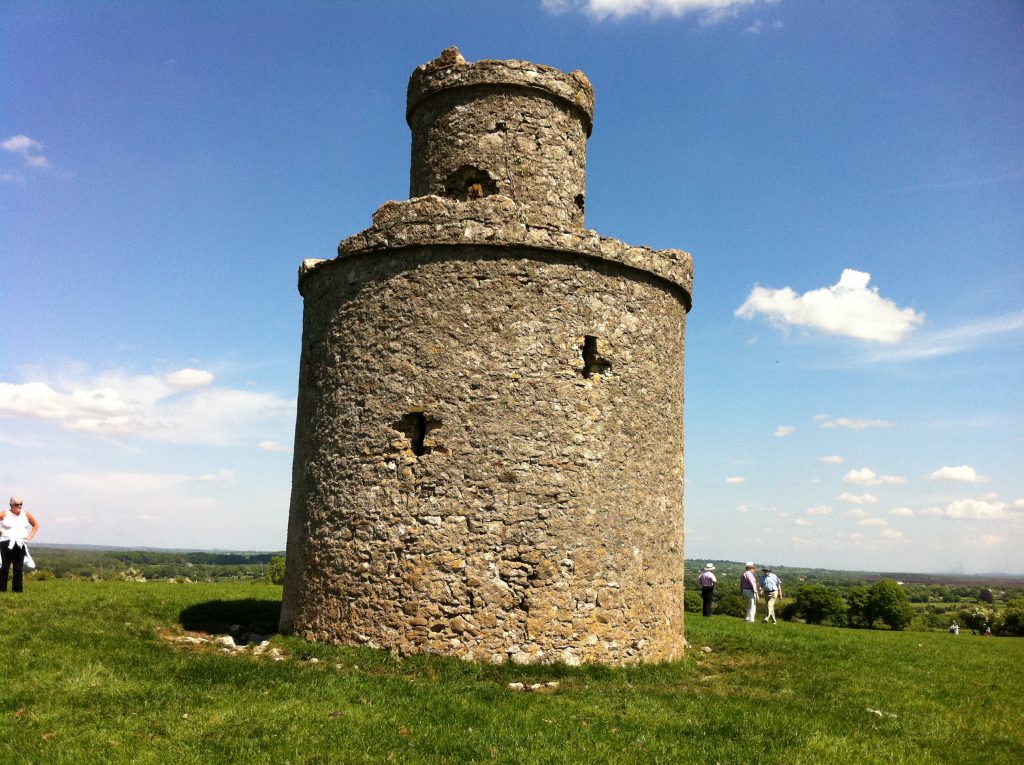The Tower on Mullagh Hill, Co Offaly


The tower at Mullagh Hill was built in 1830 by the Reverend Franc Sadleir for his son Thomas. It was built on an elevated site close to Killurin within the grounds of Mullagh House. The tower provides commanding views of the neighbouring countryside, soft, undulating verdant fields which contrast with the rich, russet bogs to the south, a view that is relatively unchanged since Franc Sadleir and his family would have looked out over their land.
Franc Sadleir was born on 3 May 1775, the second son of a barrister, Thomas Sadleir of Castletown, Co. Tipperary. Franc was an academic, dedicated to Trinity College Dublin. He was admitted as a young boy of fifteen and spent all his working life there. He died as Provost of Trinity, aged seventy-seven.
In 2014 conservation work began on the folly tower with funding from the Follies Trust and the Department of Arts Heritage & an Gaeltacht’s Built Heritage Job leverage scheme (BHJLS). Repairs were carried out to the door and window openings, decayed lintels were repaired or replaced whilst historic bricks were used when replacements were required. Vegetation at high level was removed and soft capping of walls undertaken where necessary with lime mortar. Empty joints were filled with mortar and a new gate inserted at the doorway. Finally two coats of limewash were applied to the outer surfaces. The effect is amazing as the folly tower looks wonderful!
The Follies Trust would like to acknowledge that this was a combined effort by many people and the successful outcome is because everyone played their roles in a cheerful and positive way. The owner, Alo Dillon, was patient and accommodating; the Conservation Officer, Rachel McKenna and the Heritage Officer, Amanda Pedlow, worked tirelessly to ensure the project went ahead and credit is due to Killurin Construction for carrying out the work to the careful conservation standards specified in Margaret Quinlans’s report.
The tower at Mullagh Hill was chosen as ‘Building of the Month’ in September 2018 by The National Inventory of Architectural Heritage and a report was published on their website.
Finally our thanks to Mary Hanna for her advice and guidance and the Department’s BHJLS for making the funding available. (NIAH ref. 14924004)



